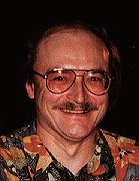The Seventh IASTED International Conference on
Signal Processing, Pattern Recognition and Applications
SPPRA 2010
February 17 – 19, 2010
Innsbruck, Austria
KEYNOTE SPEAKER
Representing Scenes with dynamic objects by Graph Pyramids
Abstract
A temporal image sequence increases the dimension of the data by simply stacking images above each other. This further raises the computational complexity of the processes from 2D. The typical content of a pixel or voxel is its grey or color value, with some processing features and fitted model parameters added. In a pyramid these values are repeatedly summarized in the stack of images or image descriptions with a constant factor of reduction. From this derives their efficiency of allowing log(diameter) complexity for global information transmission. Content propagates bottom-up by reduction functions like inheritance or filters, and content propagates top-down by expansion functions like interpolation or projection. Moving objects occlude different parts of the image background. Computing one pyramid per frame needs lots of bottom-up computation, and very complex and time consuming updating. In our new concept we propose one pyramid per object, and one pyramid for the background. The connection between both is established by coordinates that are coded in the pyramidal cells much like in a Laplacian pyramid or a wavelet. We envision that this code will be stored in each cell and will be invariant to the basic movements of the object. All the information about position and orientation of the object is concentrated in the apex. New positions are calculated for the apex and can be accurately reconstructed for every cell in a top-down process. At the new pixel locations, the expected content can be verified by comparing it with the actual image frame.Biography of the Keynote Speaker

Dr. Walter G. Kropatsch is currently a professor at the Vienna University of Technology and Institute of Computer Aided Automation. Since 2008 he has been an area editor for Computer Vision and Image Understanding, and, since 2005, he has been the advisory editor for Pattern Recognition Letters (Elsevier Sci., NL). Dr. Kropatsch has also served on the editorial boards of various journals, including Journal on Human Problem Solving and Journal of Electronic Imaging. From 2006–2008 he was the President of the International Association for Pattern Recognition (IAPR). Dr. Kropatsch is currently the Chair of the Fellow Committee of the IAPR (2008–2010), and was the Chair of the Nominating Committee of the IAPR (2006–2008). Since 1988, he has been on the governing board of the Austrian Computer Society, and, since 1984, a representative of Austria in the IAPR Governing Board. Since 1978 Dr. Kropatsch has published almost 300 articles and technical reports in a number of journals and conference proceedings. Dr. Kropatsch’s scientific interests include theoretical and practical research in digital image processing, pattern recognition, remote sensing, art history, archeology, industry, analysis of medical imagery, digital elevation models, expert vision systems, and image pyramids.
















